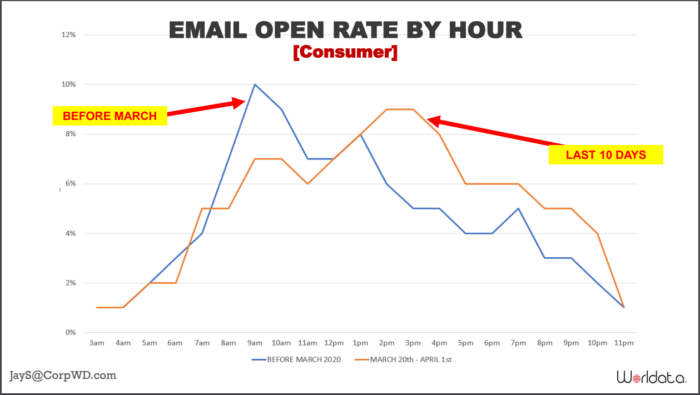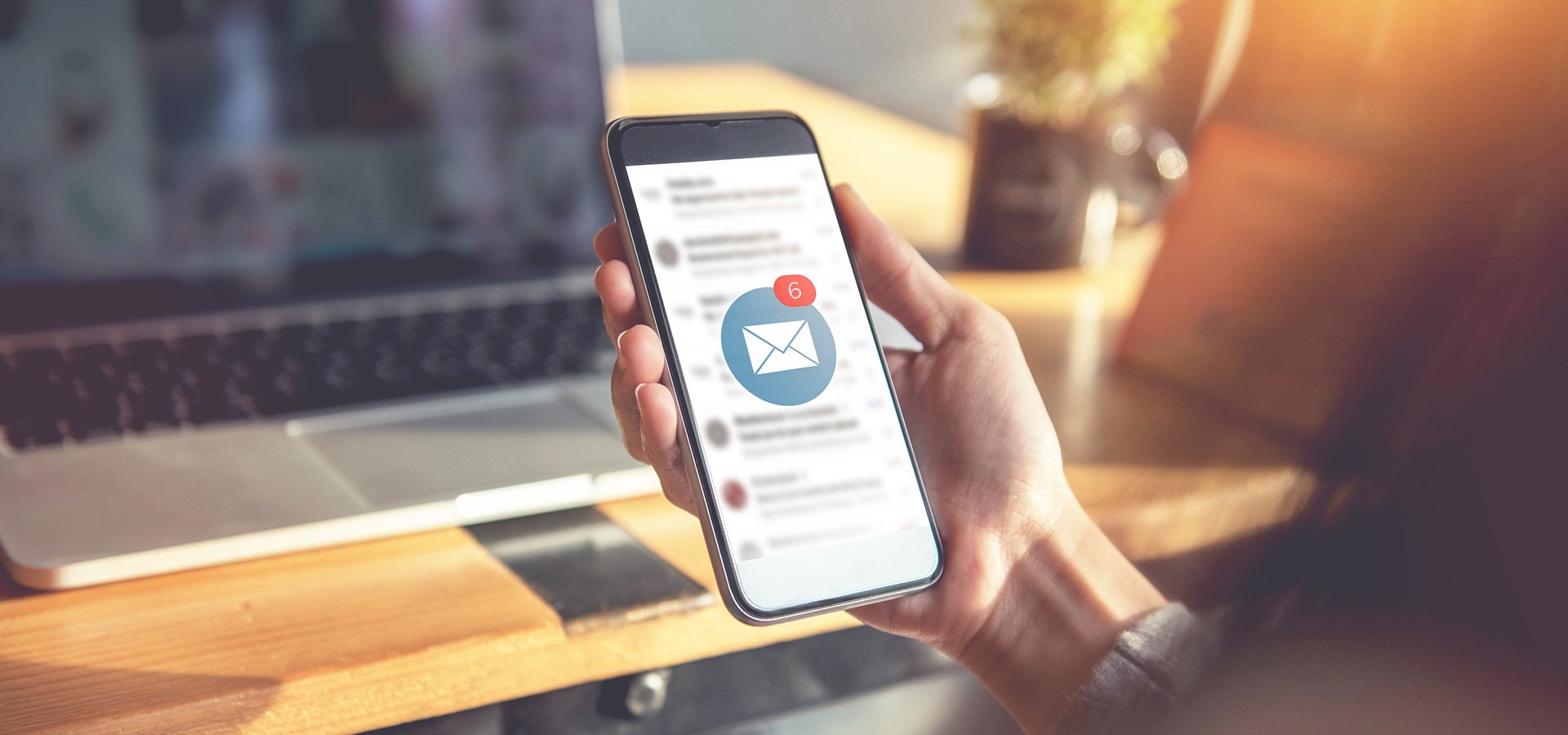How can you make your email outreach as effective as possible during this unprecedented medical event? Follow this guidance to get your important messages to your target audience.
Your health consumers need information from you right now. Whether it’s details on symptoms, treatments, telehealth, making masks, how to clean their home, protecting their families, making donations … the list goes on. And they need information from a source they can trust – you.
You’re probably creating some of this great content, but are you emailing it? People are turning to their inbox now more than ever. According to research by Paved, open rates were up 15% worldwide through March.
As you get ready to hit send and share vital information via email, here are six tips to make sure you are being as effective as you can in this new landscape.
#1: Test What You Think You Know
Ask any email marketer (experts at Litmus and MailChimp included) and they’ll tell you – email marketing best practices are changing and changing fast. For example, your old send times and days may not be the most effective anymore, now that many people are working from home and looking for information from experts at different, more varied times. For example, according to WorldData, before March, 8:00 – 9:00 a.m. was the best time to send email, but from March 20 to April 1, that time has moved to 2:00 – 3:00 p.m.

Also keep in mind is that although your instinct may be to stop email communication, people are turning to their inbox now more than ever – they want to hear from you there. It’s important to keep your communication cadence, while paying attention to your analytics to make any needed adjustments.
#2: Use the Words Your Subscribers Are Using and Looking For
Pay close attention to the words your subscribers are using on your site as well as Google Trends data and keep an eye on the changing use of words that are making an impact in the broader email landscape.
For example, using COVID-19 is not recommended in subject lines of emails. Not only are users burnt out after all of the commercial emails providing “A Letter From Our CEO on COVID-19,” but also there’s already spam being spun up utilizing that term. Using this term scarcely in subject lines and instead using terms like Coronavirus, pandemic, epidemic, etc., will help you avoid getting flagged as spam. This is just one of the new terms that you need to pay attention to trends on. Resources like subjectline.com are a great way to check on recent trends and help you improve deliverability and open rates.
#3: Consider Asking Your Subscribers What Information They Want
Believe it or not, surveys are also popular during this time! Users want to understand how they’ll benefit from giving you their time to take the survey more than ever. So consider asking your subscribers what information they want from you and make it clear that their feedback will inform the details you’re sharing with them.
If you already have a regular newsletter, consider reaching out to those subscribers and asking them directly to complete a short survey about the types of information they’re looking for you to share. Maybe your subscribers are burned out on hand-washing information but they want to know how to stay mentally healthy while at home. You can use their responses to plan your content marketing mix to meet those needs and send out new, requested content to your subscribers.
#4: Don’t Forget to Segment
Segmentation has never been more important for your email subscribers and you. Your new and expectant mothers, for example, have totally different needs than your foundation donors. Meet each of your audiences where they’re at and provide the information they will benefit most from hearing.
For example, if you do have an email segment for your foundation donors, consider telling them how donating now directly impacts your ability to address COVID-19. Whether it’s funding PPE or making sure there’s little to no interruption of care, this audience will want to know how their contributions are helping in this challenging time, and it may even spur them to give more.
#5: Reassure Your Subscribers
As a healthcare marketer, compassion is probably top of mind for you frequently. That’s more important now than ever. Language, images, phrasing, it all goes into reassuring your subscribers that, while taking COVID-19 seriously is necessary, we’re in this together and we will find a way through.
One way you can do that is providing content that helps them make the best of their new normal. Consider stories on topics like:
- Options to get exercise and staying fit at home
- Meal planning for healthy eating
- Tips for cooking together with kids
- Ways to reassure kids during COVID-19
- DIY tutorials on making masks for personal use or donation
- Ways to safely donate blood
You can address the new needs of your subscribers and assure them they can rely on you.
#6: Share Your Reasons to Celebrate
Have you been seeing success with treating COVID-19 cases? Are you recognizing your hard-working frontline staff? Has your community made generous donations of meals or PPE supplies? These stories of connection and encouragement are all happening, despite how hard things are right now. Take the time to recognize and celebrate all the wonderful stories happening in your community and share them with your subscribers, too.
Use Email to Engage and Connect
Email is an important part of your crisis communication plan. As you create new content for your social and website platforms, don’t forget to use email to connect and engage with subscribers who want to hear from you.
Do you need help figuring out your email mix or want some help reviewing your email plan? Or are you just getting started with email marketing? Contact Geonetric and get support from our experts.
